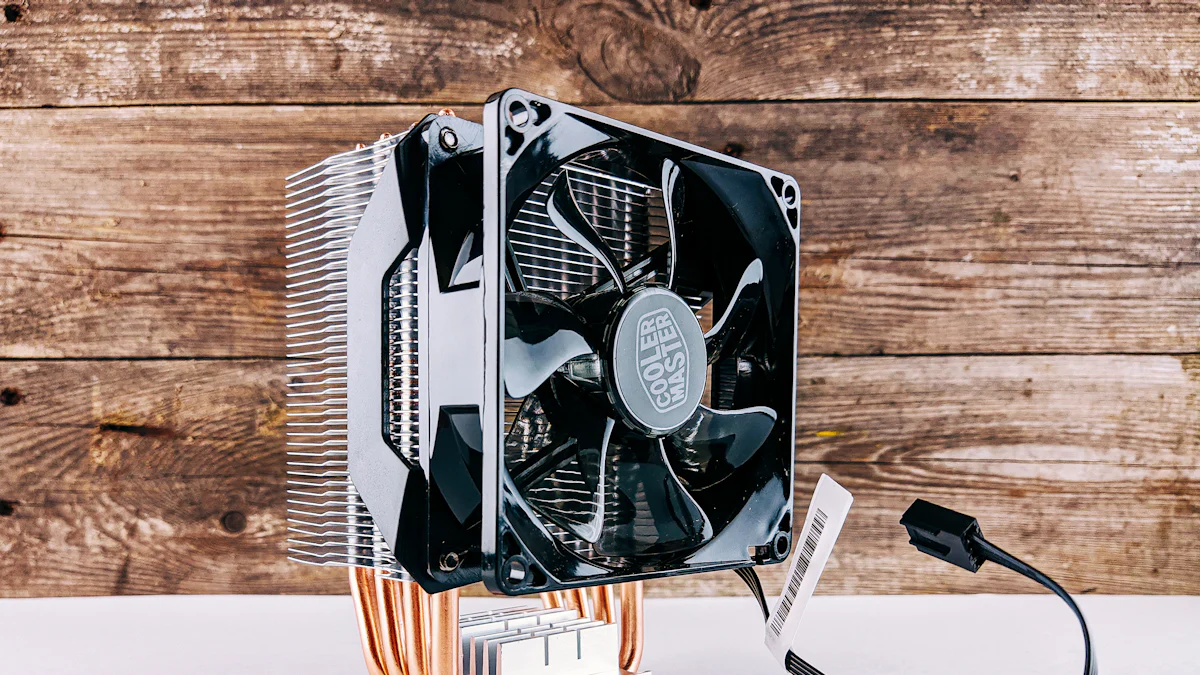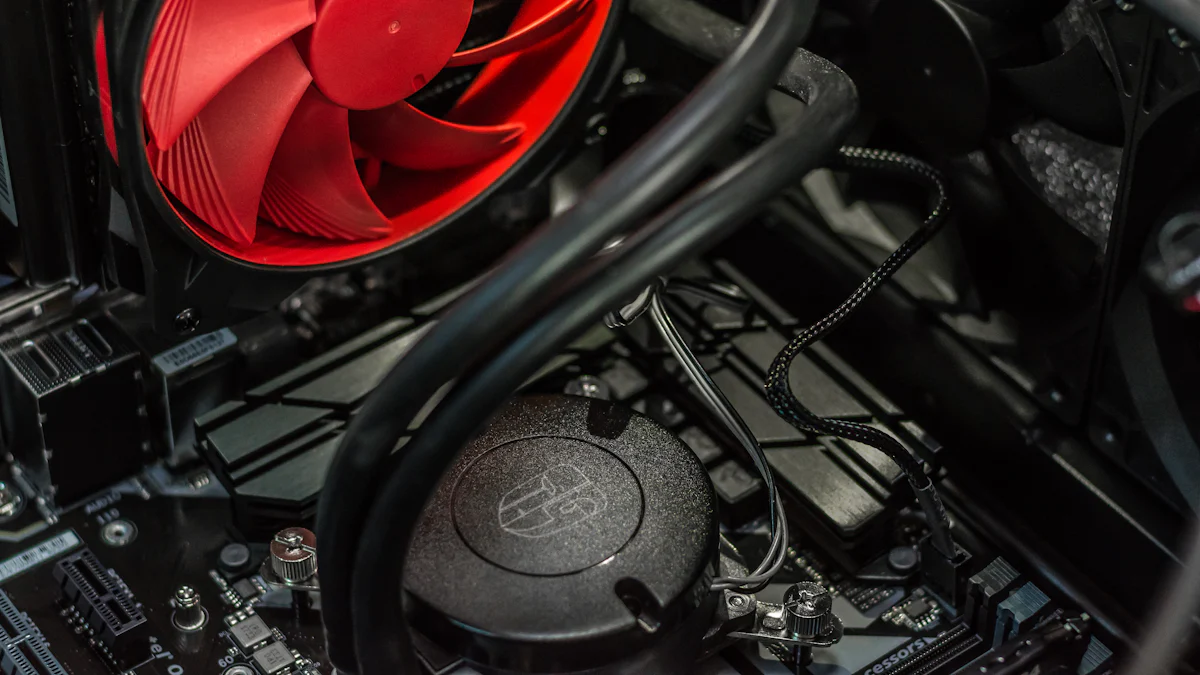
Heatpipes play a crucial role in modern technology by ensuring efficient thermal management. They excel at transferring heat with minimal temperature differences, making them indispensable in various industries. You will find heatpipes commonly used in electronics, where they help cool CPUs and GPUs, and in aerospace, where they manage thermal conditions in satellites and aircraft systems. Their ability to transport heat over long distances while maintaining uniform temperature distribution makes them a reliable choice for many applications. This versatility highlights their importance in today's technological advancements.
Heatpipes are fascinating components that play a vital role in thermal management across various technologies. To truly appreciate their functionality, it's essential toUnderstanding Heatpipesand their construction and working mechanism.
When constructing heatpipes, the choice of materials significantly impacts their performance. Typically, manufacturers use metals like copper and aluminum due to their excellent thermal conductivity. Copper is often preferred because it efficiently transfers heat, making it ideal for high-performance applications. However, aluminum is lighter and more cost-effective, which can be advantageous in specific scenarios.
The design and structure of heatpipes are crucial for their effectiveness. A typical heatpipe consists of a sealed hollow tube with a wick structure lining its inner walls. This wick is often made from sintered metal powder or a mesh, which helps in the capillary action necessary for the heatpipe's operation. The internal structure, including the wick's porosity and thickness, can be adjusted to meet specific cooling requirements. This flexibility allows heatpipes to be tailored for different applications, ensuring optimal performance.
The working mechanism of heatpipes relies on the phase change process. Inside the heatpipe, a small amount of working fluid, such as water or ammonia, is present. When heat is applied to one end of the pipe, the fluid absorbs the heat and evaporates. This vapor then travels to the cooler end of the pipe, where it releases the heat and condenses back into a liquid. This continuous cycle of evaporation and condensation allows heatpipes to transfer heat efficiently over long distances.
Heatpipes operate on fundamental heat transfer principles. They leverage the high thermal conductivity of the working fluid during the phase change process. This allows them to move large amounts of heat with minimal temperature difference between the hot and cold ends. By embedding heatpipes in heat sinks, you can significantly enhance thermal conductivity, sometimes increasing it from around 200 W/m-K to as high as 1,200 W/m-K. This improvement enables the reduction of heat sink plate thickness and fin area, optimizing the overall design for better heat dissipation.
Heatpipes have become integral to various industries due to their exceptional ability to manage heat efficiently. Let's explore how they are applied in different sectors.
In the electronics industry, heatpipes are indispensable for maintaining optimal performance and preventing overheating.
You often find heatpipes in computers, where they play a crucial role incooling CPUs and GPUs. These components generate significant heat during operation. Heatpipes transfer this heat away from the processors, ensuring that your computer runs smoothly without overheating. By doing so, they help maintain the longevity and efficiency of your device.
Heatpipes also enhance the thermal management of smartphones and laptops. These devices require compact and efficient cooling solutions due to their small size and high-performance demands. Heatpipes effectively dissipate heat, allowing your gadgets to function optimally without compromising on speed or battery life.
The aerospace industry relies heavily on heatpipes for thermal control in challenging environments.
In satellites, heatpipes manage the thermal conditions of heat-sensitive electronics. They ensure that the equipment remains within safe temperature limits, even in the harsh conditions of space. This capability is vital for the reliable operation of satellites over extended periods.
Aircraft systems also benefit from heatpipes, particularly in avionics cooling and engine thermal management. By efficiently transferring heat, heatpipes help maintain the stability and performance of critical systems, ensuring safe and efficient flights.
Beyond electronics and aerospace, heatpipes find applications in various other industries.
In HVAC systems, heatpipes enhance energy efficiency by improving heat exchange processes. They help maintain comfortable indoor temperatures while reducing energy consumption, making them a valuable addition to modern heating and cooling solutions.
Heatpipes contribute to renewable energy systems by optimizingthermal management. They play a role in solar panels and other renewable technologies, where efficient heat transfer is essential for maximizing energy output and system longevity.
Heatpipes offer numerous advantages that make them a preferred choice in various applications. Their unique properties enhanceperformance, reliability, and energy efficiency.
Heatpipes excel in dissipating heat efficiently. They transfer large amounts of heat quickly, even with a small temperature difference. This capability ensures that devices remain cool, preventing overheating and maintaining optimal performance. Unlike other cooling mechanisms, heatpipes do not require external power, making them a cost-effective solution for heat management.
By improving heat dissipation, heatpipes contribute to increased system efficiency. They maintain a constant temperature across components, ensuring that each part operates at its best. This uniform temperature distribution reduces the risk of thermal stress, enhancing the overall performance and longevity of the system.
Heatpipes are known for their long operational life. Their passive design, which relies on phase change principles, minimizes wear and tear. This durability makes them a reliable choice for long-term applications, reducing the need for frequent replacements.
With minimal moving parts, heatpipes require little maintenance. Their robust construction and efficient operation mean you can rely on them for consistent performance without the hassle of regular upkeep. This low-maintenance nature is particularly beneficial in industries where downtime can be costly.
Heatpipes contribute to energy efficiency by reducing the need for additional cooling systems. Their high thermal conductivity allows for effective heat transfer without consuming extra power. This reduction in energy consumption not only lowers operational costs but also supports sustainable practices.
By minimizing energy use, heatpipes have apositive environmental impact. They help reduce carbon emissions associated with energy production, aligning with global efforts to combat climate change. Their ability to operate silently and without external power further enhances their eco-friendly credentials.

Heatpipes are essential for effective thermal management in modern devices. Their ability to transfer heat efficiently ensures that your gadgets perform optimally and remain reliable over time.
In today's technology-driven world, maintaining optimal performance in electronic devices is crucial. Heatpipes play a significant role in this byefficiently transferring heataway from critical components. When you use a computer or smartphone, these devices generate heat, especially during high-demand operations. Heatpipes help dissipate this heat, ensuring that your device runs smoothly without any performance hiccups. By keeping temperatures in check, they allow your electronics to function at their best, providing you with a seamless user experience.
Overheating can severely damage electronic components, leading to reduced lifespan and potential failure. Heatpipes act as a safeguard against this by effectively managing heat distribution. In laptops and other compact devices, space constraints make it challenging to implement traditional cooling methods. Heatpipes, with their ability to move heat efficiently in tight spaces, prevent overheating and protect your valuable electronics from damage. This makes them indispensable in ensuring the longevity and reliability of modern devices.
The trend towards smaller and more powerful devices has driven the need for innovative thermal management solutions. Heatpipes have been instrumental in enabling miniaturization by providing efficient heat transfer in compact spaces. As devices become smaller, the challenge of managing heat increases. Heatpipes address this challenge by allowing manufacturers to design thinner and more compact gadgets without compromising on performance. This capability has paved the way for the development of sleek and portable electronics that fit seamlessly into your lifestyle.
High-performance systems, such as gaming computers and advanced aerospace equipment, generate substantial amounts of heat. Heatpipes support these systems byenhancing their cooling capabilities. By embedding heatpipes in heat sinks, manufacturers can significantly improve thermal conductivity, allowing these systems to operate at peak performance levels. This improvement not only boosts the efficiency of high-performance devices but also ensures their stability and reliability during demanding tasks. As a result, heatpipes have become a cornerstone in the advancement of cutting-edge technologies.
Heatpipes continue to evolve, offering exciting possibilities for future applications. As technology advances, you can expect to see innovative developments and expanded uses in various fields.
Researchers are constantly exploring new materials and designs to enhance the performance of heatpipes. By experimenting with different metals and alloys, they aim to improve thermal conductivity and durability. For instance, using advanced composites or nanomaterials could lead to heatpipes that are lighter and more efficient. These innovations will allow you to benefit from devices that run cooler and last longer.
Heatpipes are finding their way into emerging technologies, providing efficient thermal management solutions. In the realm of electric vehicles, for example, they help manage battery temperatures, ensuring optimal performance and safety. As you explore the world of virtual reality and augmented reality, heatpipes play a crucial role in keeping devices cool, enhancing your experience. Their integration into these cutting-edge technologies highlights their adaptability and importance in modern advancements.
The versatility of heatpipes opens doors to new industries seeking efficient thermal management. In the medical field, they can be used in imaging equipment and diagnostic devices, where precise temperature control is vital. You might also see heatpipes in the food industry, where they help maintain consistent temperatures in refrigeration and cooking equipment. This expansion into diverse sectors underscores the growing demand for reliable and efficient heat transfer solutions.
Space exploration presents unique challenges for thermal management, and heatpipes offer promising solutions. In spacecraft, they efficiently transfer heat away from sensitive instruments, ensuring their proper functioning in extreme conditions. As you look to the future of space travel, heatpipes could play a pivotal role in maintaining the thermal stability of habitats and equipment on other planets. Their potential in space exploration highlights their ability to adapt to the most demanding environments.
In conclusion, the future of heatpipes looks bright, with ongoing innovations and expanding applications. As you embrace new technologies and industries, heatpipes will continue to provide essential thermal management solutions, supporting advancements and enhancing your experiences.
Heatpipes are essential for effective thermal management in modern technologies. They enhance performance by minimizing heat loss and delivering heat efficiently. You benefit from their reliability and energy efficiency, which improve the longevity of devices. As technology advances, heatpipes will support new innovations and applications. Their role in energy storage systems reflects an ethical commitment to maximizing efficiency. By improving thermal conductivity, they allow practical use in areas with conduction limitations. Embrace the future with heatpipes as they continue to evolve and expand their applications.
By continuing to use the site you agree to our privacy policy Terms and Conditions.